SEO
9 Tactics to Increase Brand Awareness (Tried & Tested)
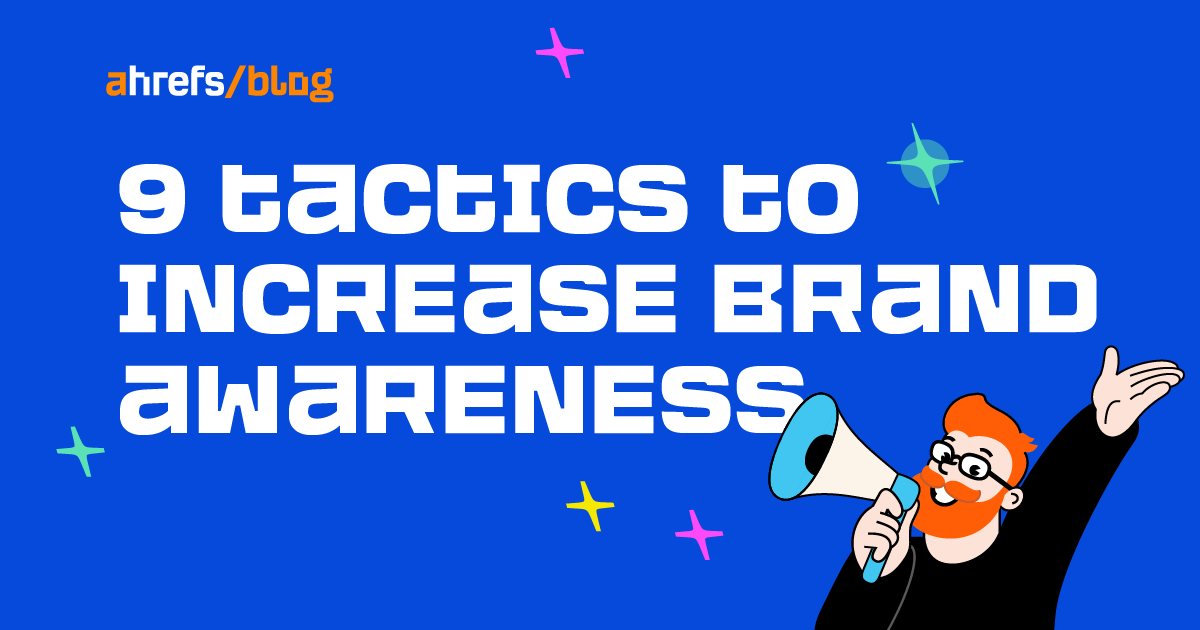
One of the best ways to make anyone buy from you is to make them aware of your brand and products before they even start considering the purchase.
Countless tactics can increase your brand awareness. Technically, any piece of your marketing communication can be the first time someone from your target audience hears about you. But we’ll focus only on what’s truly impactful here.
Let’s go through nine tried and tested ways to increase your brand awareness.
If people are searching for information surrounding your products (they most likely are), your website should be present in the search results.
The great thing about organic search traffic is that it’s one of the few channels with the potential to influence your target audience throughout the whole marketing funnel:

We’re naturally interested in the top of the funnel (ToFu) here, so you need to create the type of content people search for when they start getting information about the industry you’re in.

This is where keyword research comes into play.
Keyword research is the process of discovering valuable search queries that your target customers type into search engines like Google to look for products, services, and information.
You start with a keyword research tool like Ahrefs’ Keywords Explorer and plug in a few seed words that define your niche:
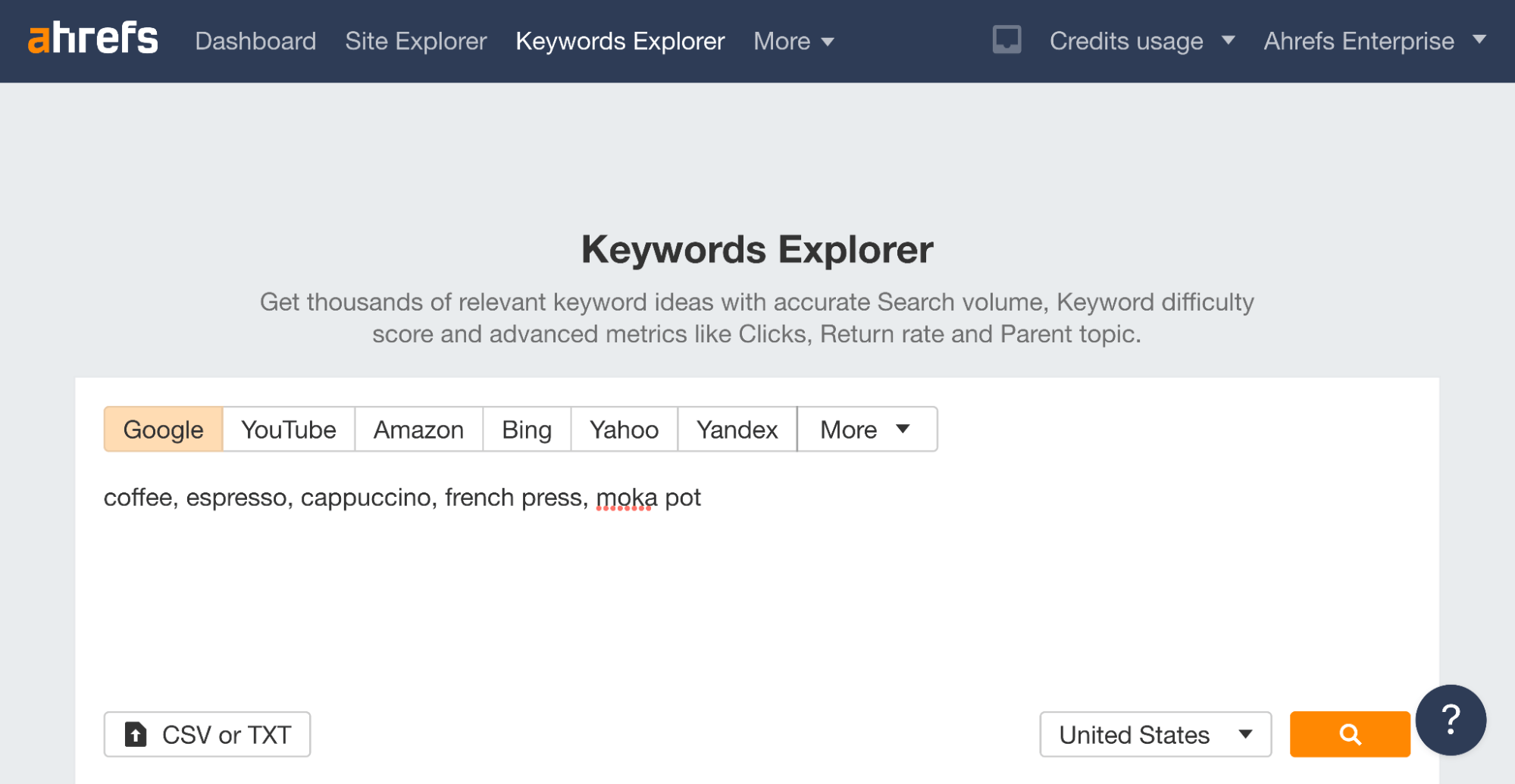
Next, head over to the Matching terms report to see all keywords containing the “seed” keywords from the input:

As you can see, over 4 million keywords contain those seed phrases. Now it’s all about filtering and choosing which keywords you’ll target with a great piece of content.
In this case, I’m going for keywords that:
- Have a maximum Keyword Difficulty (KD) of 40, so they shouldn’t be too difficult to rank for.
- Have a Traffic Potential (TP) of at least 500 clicks a month.
- Include terms that signal searchers are looking for the type of informational content we’re planning to create.
Voilá, I narrowed the list down to ~8,500 keywords:
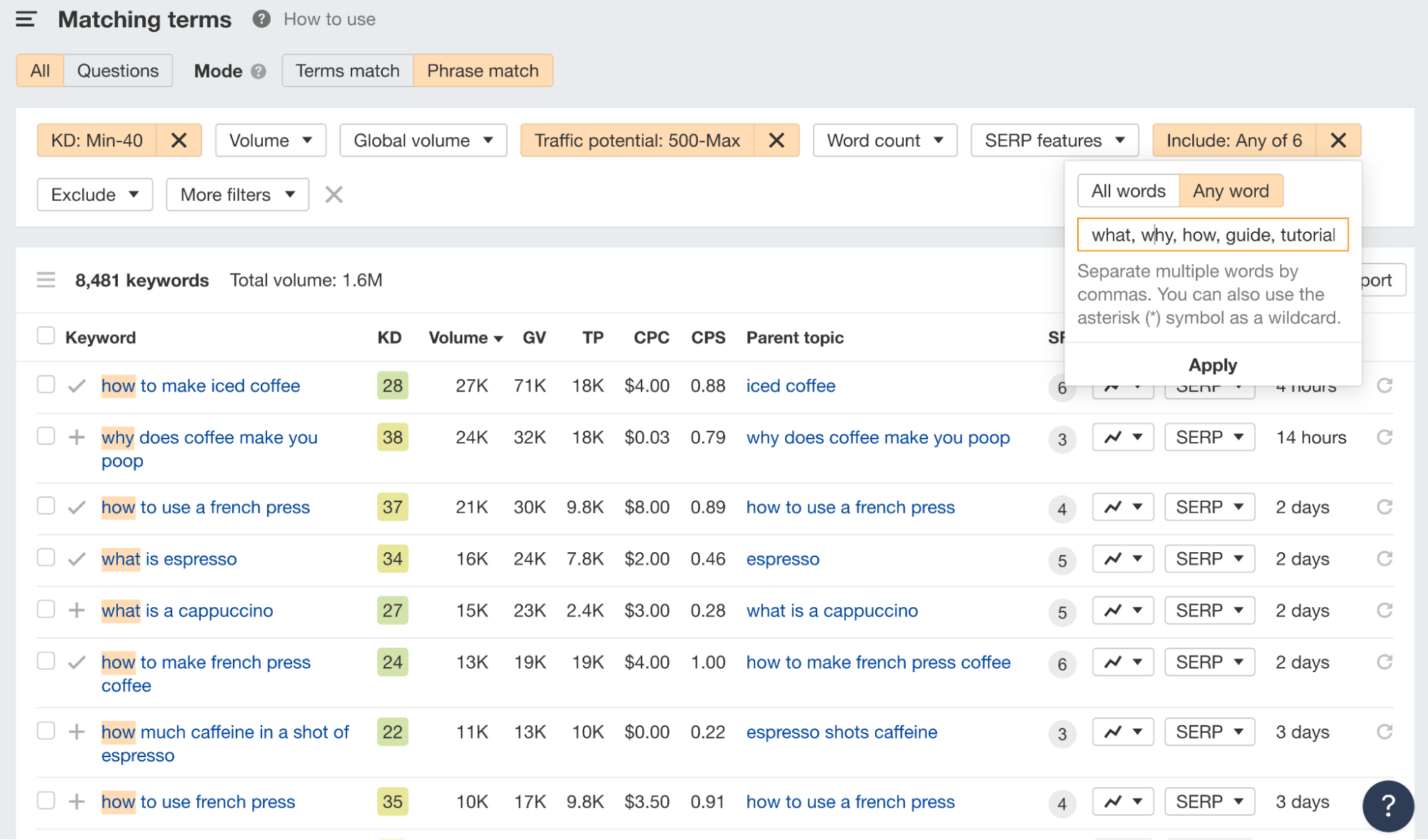
The last filter to apply here is common sense. Always think about how relevant the topic is to your brand. Can the potential visitor ever become your customer? For example, suppose you’re selling fancy equipment for making espressos. In that case, people looking up “what is espresso” aren’t likely to ever become your target audience.
Head on to the following guides to learn more about researching keywords and creating content:
The purpose of public relations is to positively influence how a brand is perceived. There’s no doubt that communications with the media and the general public should be in your arsenal for increasing brand awareness.
Getting started with PR can seem terrifying. Journalists are swamped with emails and topics they could write about. You must truly deserve the media attention.
But every writer needs expert contributions for their content once in a while. You can be that expert in your niche, and it’s a great way to get your foot in the door of the bigger PR game.
All you need to do is to subscribe to a feed of media inquiries via services like HARO, SourceBottle, or Terkel.
Here’s what one of these feeds looks like with HARO:

Your goal is to provide valuable information as fast as possible whenever you see a good opportunity.
The competition, especially on HARO, can be fierce. Here are a few tips to start off on the right foot:
- Only respond to requests where you or your colleagues are experts on that topic – Forget it if you don’t know your stuff.
- Stick to the requirements – Journalists sometimes require specific formats or information about your credentials.
- Try to provide the answer ASAP – You could subscribe to a premium HARO tier for $49/month to give you a head start before other users get the email feed.
- Check the publication’s authority and history – Some companies exploit the potential to get expert contributions easily, so you should be able to identify and ignore these.
Let’s expand on that last point a little. You should always know who you’re responding to so you can make sure the eventual coverage is worth the effort. That means ignoring anonymous inquiries and separating the wheat from the chaff.
If you’re unfamiliar with the company next to the inquiry, look up its website and review a few of its recent posts. Let’s take a look at a specific website example I just came across in the HARO feed:
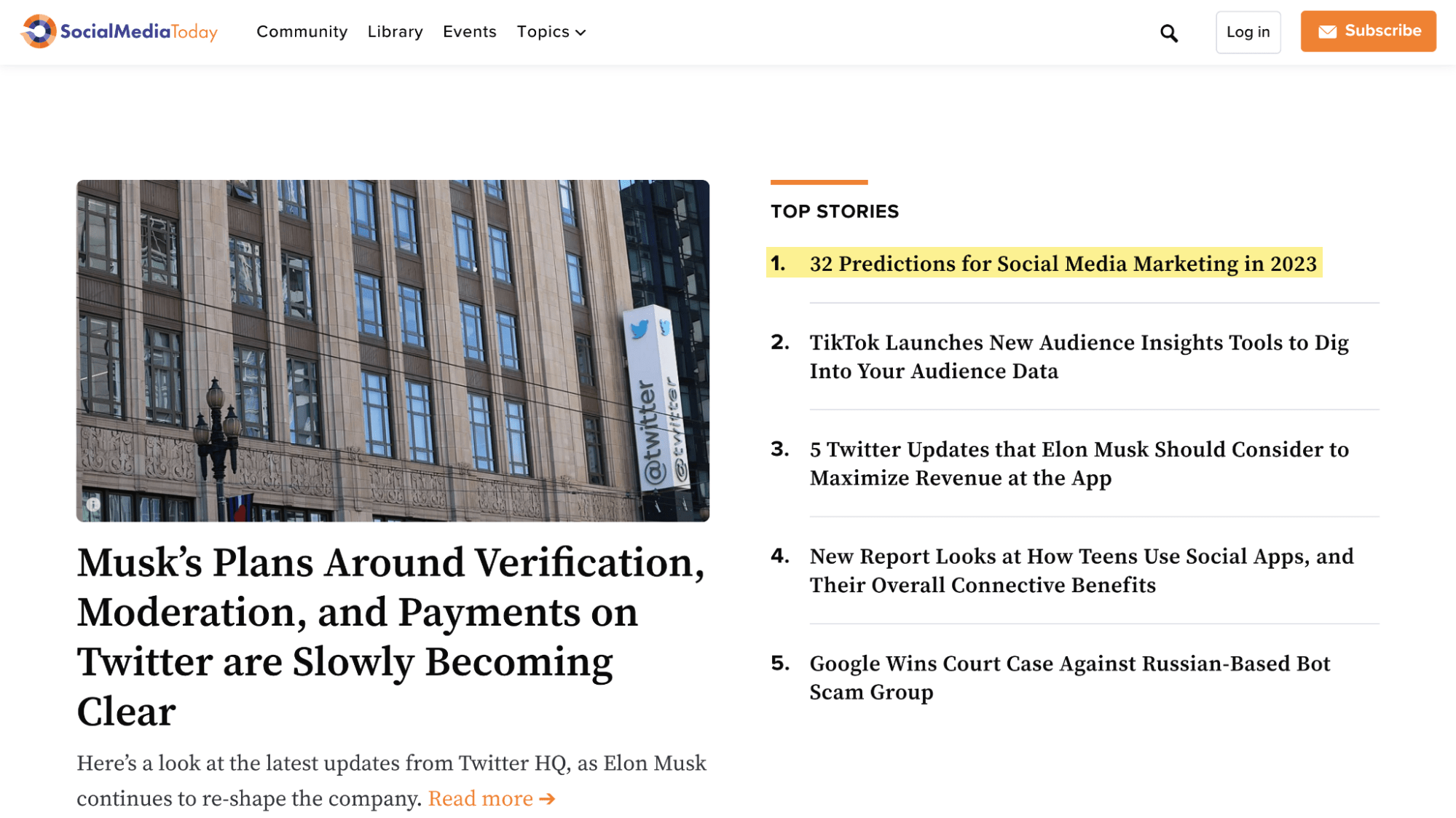
What immediately catches my attention here is the large “listicle” post. Since journalists and bloggers tend to feature multiple, sometimes even tens of HARO contributors, you can look for patterns in the titles like a large listicle number or “shared by experts.”
In this case, the large listicle post wasn’t created from HARO contributions. The rest of the articles don’t look sourced from HARO either. You don’t want to see a significant number of posts that include these contributions, as it dilutes the benefits you get from the coverage and backlink to your website. This particular website gets a pass on the content-sourcing front.
Another way to assess how valuable the coverage could be is to look at the website’s backlink profile strength. Generally speaking, the more it’s linked to from authoritative websites (ideally in your niche), the more valuable the backlink is for you.
The website’s Domain Rating (DR) is a good proxy metric for this particular use, which you can see with Ahrefs’ SEO Toolbar.

Simply, the higher the DR, the better. As a rule of thumb for English websites, you can exclude anything below DR 50 unless the website looks relevant to your niche and the content is of high quality.
In all, 14,000 new customers in 2020 told us they learned about Ahrefs from their friends:
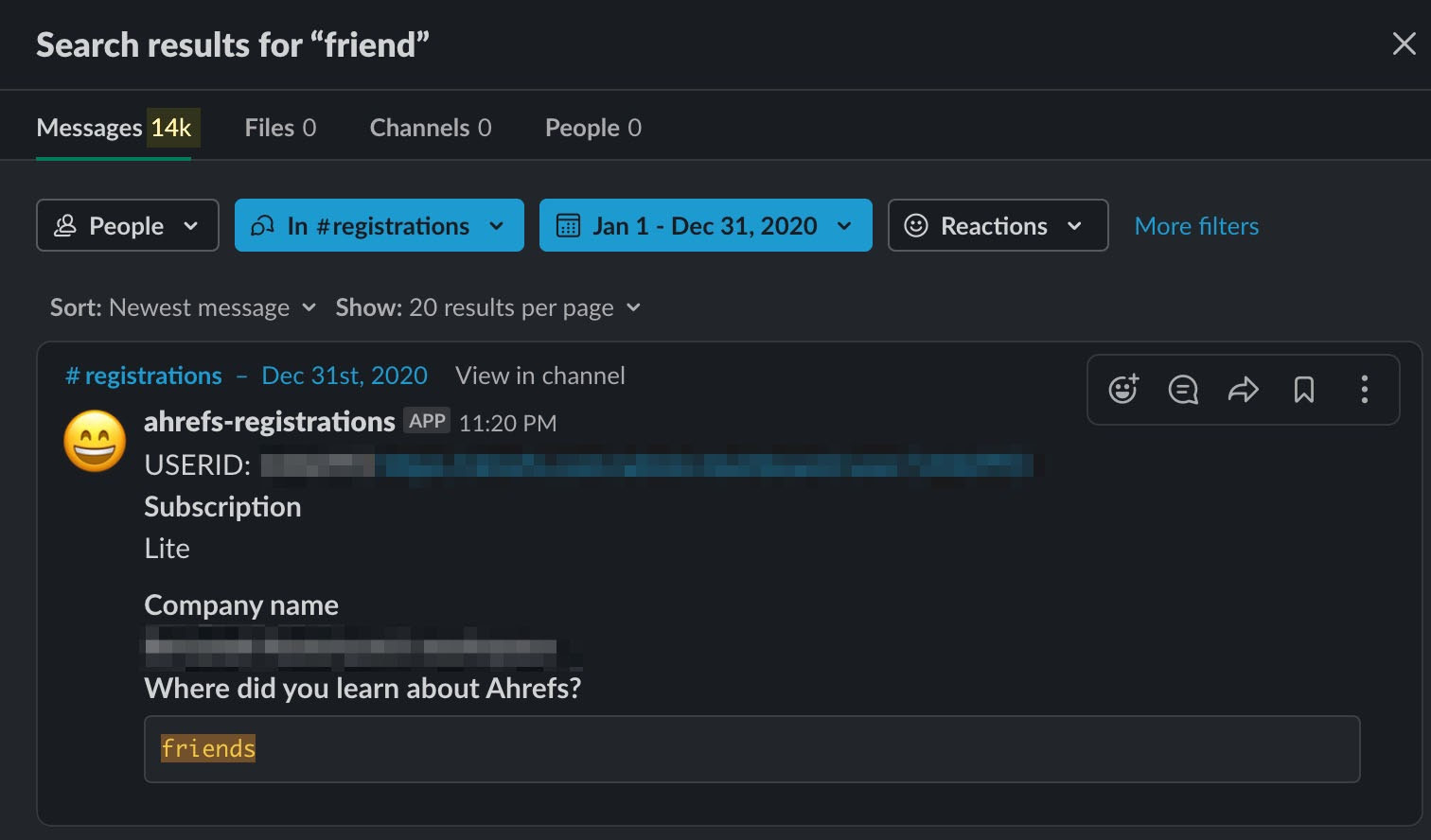
We can’t fully control it, but trying to incentivize and influence people to bring up Ahrefs in their discussions clearly has vast benefits. This process is known as word-of-mouth marketing.
Research from Nielsen shows that 83% of people trust recommendations from friends and family. It’s simply the most trustworthy and authentic marketing channel. No matter how great your marketing communication is, you can’t beat it.
The number one thing that nudges people to talk positively about a particular brand is a superb customer experience. Most of it consists of having a great product, but the entire buying process and customer service can’t be neglected. Only when you have these will proper marketing communication make it all work effectively:
In essence, word-of-mouth marketing is about properly managing your brand, communication, and product marketing once you have a product people love. To be more specific, here are four tactics to consider using:
- Make your product a natural part of your content – Referring back to the “espresso equipment” example, listing some of the products you sell for topics like “how to tamp espresso” or “espresso distribution” provides value to the reader.
- Create and distribute educational content – This helps your customers use your products better.
- Encourage customers to create and share content around your product – Here, we’re talking about social media posts, articles, photos, videos, etc. Think creative campaigns, affiliate marketing, or community hashtags. This brings us to…
- Build an engaged community within your target audience – It takes time, but it’s worth it.
On top of that, apply all suitable tactics to increase your brand awareness listed throughout this guide. Word of mouth is a by-product of improving brand awareness, leading to further increase. It’s like a flywheel.
Learn more: Word-of-Mouth Marketing: A Simple Tried & Tested Guide
People usually check the experiences of others when they’re close to making a purchase. But your brand’s visibility throughout all relevant directory listings and review platforms impacts their product choices even before they get to that stage.
For example, here are just a few of the terms the biggest software review platform, G2, ranks for in Google’s top positions:
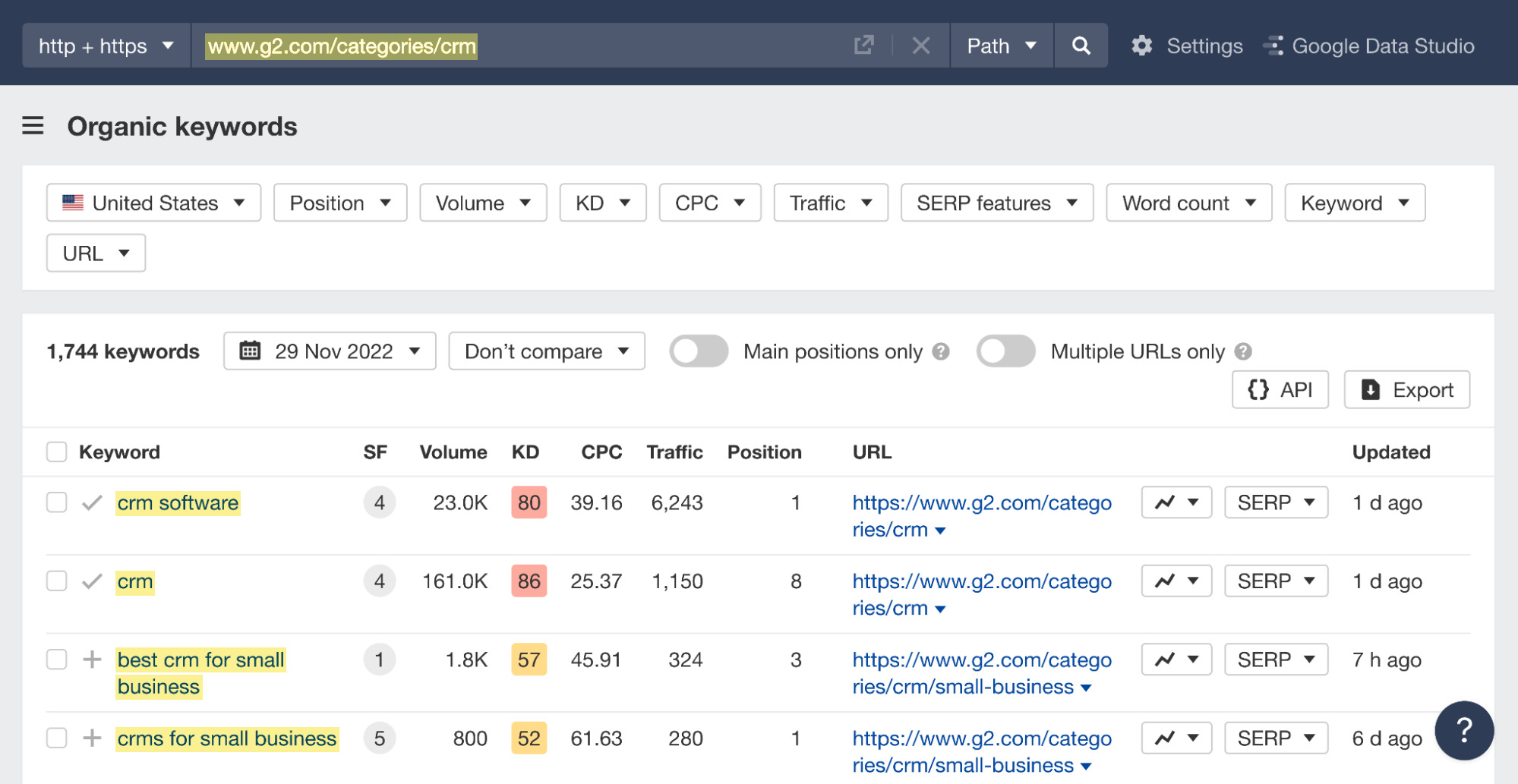
People looking up these keywords could still be considered at the top of the funnel. They’re likely aware of some of the problems CRMs solve but are just getting into specific products and brands. Being listed among the top CRM solutions on these category landing pages has obvious benefits.
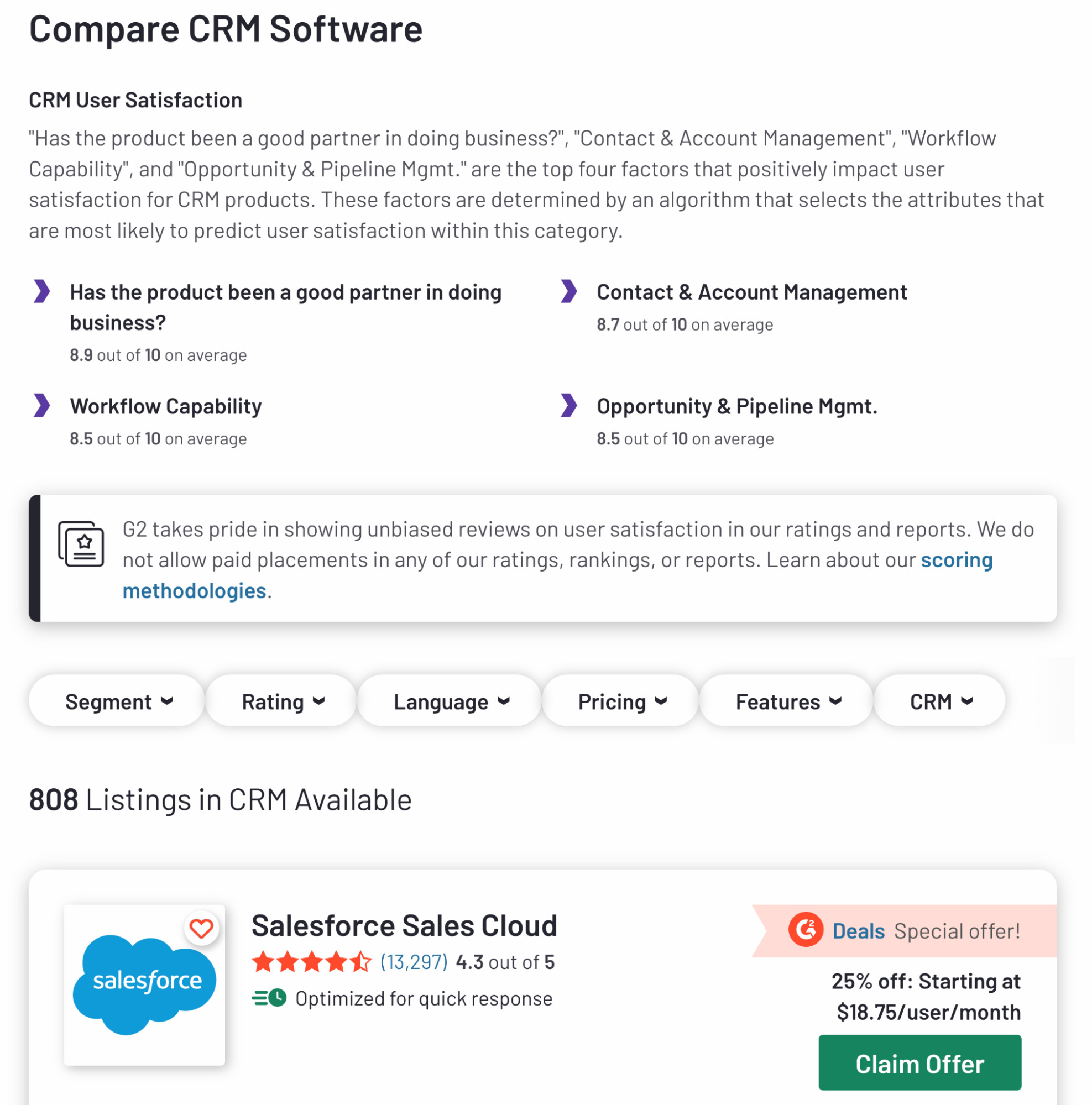
And this is far from the only page and way these platforms can showcase your brand.
For example, you can pop up on competitors’ profiles in specific sections:

Of course, getting into the top 10 among 800+ listings is naturally a challenging task. You must set up processes to gather reviews and adequately manage your online reputation. Getting a paid plan with the review platform can make things easier.
Fortunately, you can also apply these practices to many different platforms and directories. They also tend to work on similar principles because it makes sense to show the most relevant results that are the most popular:
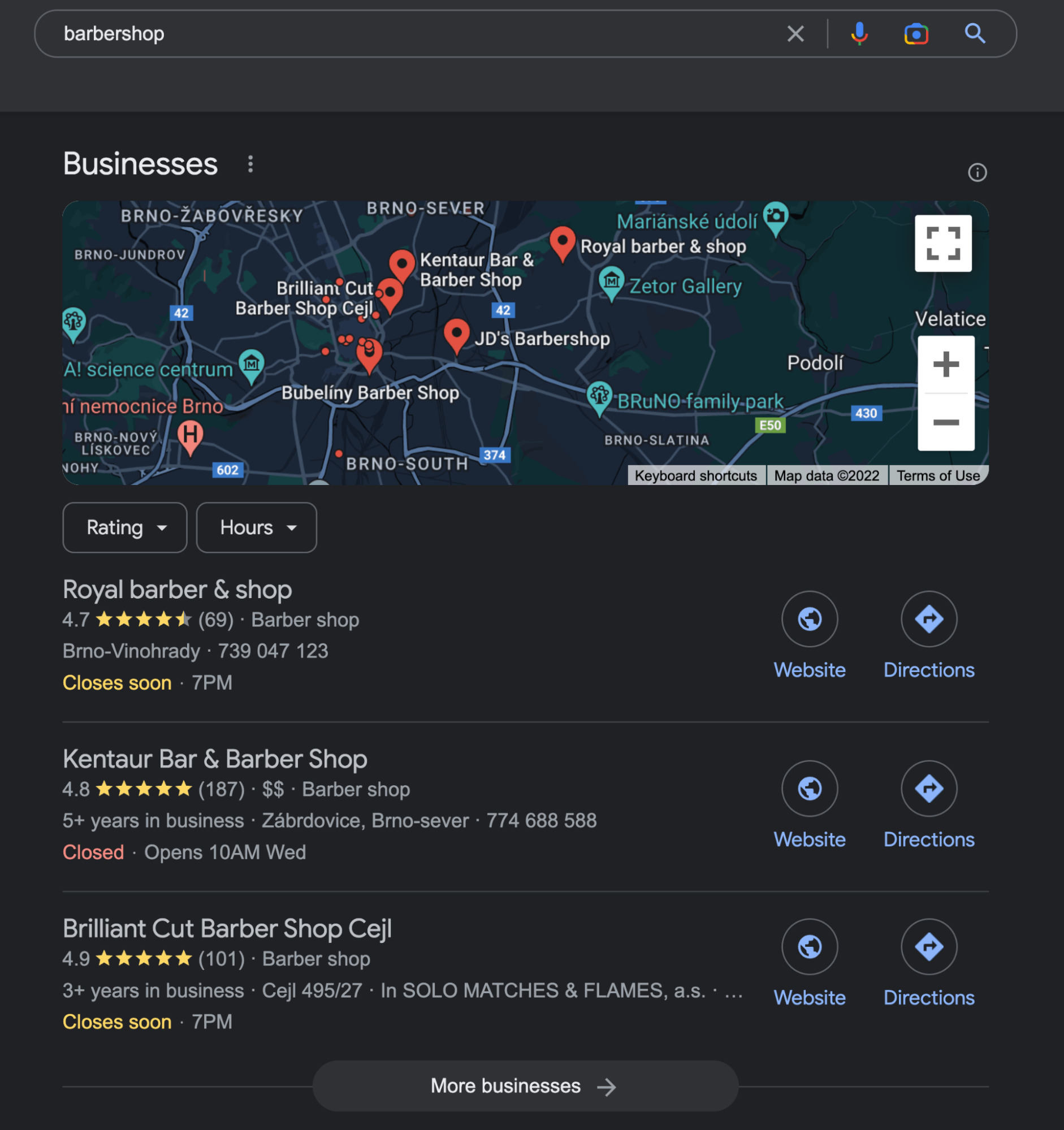
Not sure if you’ve already got a profile on every important platform? Enter your domain into Ahrefs’ Site Explorer, go to the Link Intersect tool, and fill in as many competitors as possible (the Organic competitors report can help with that).
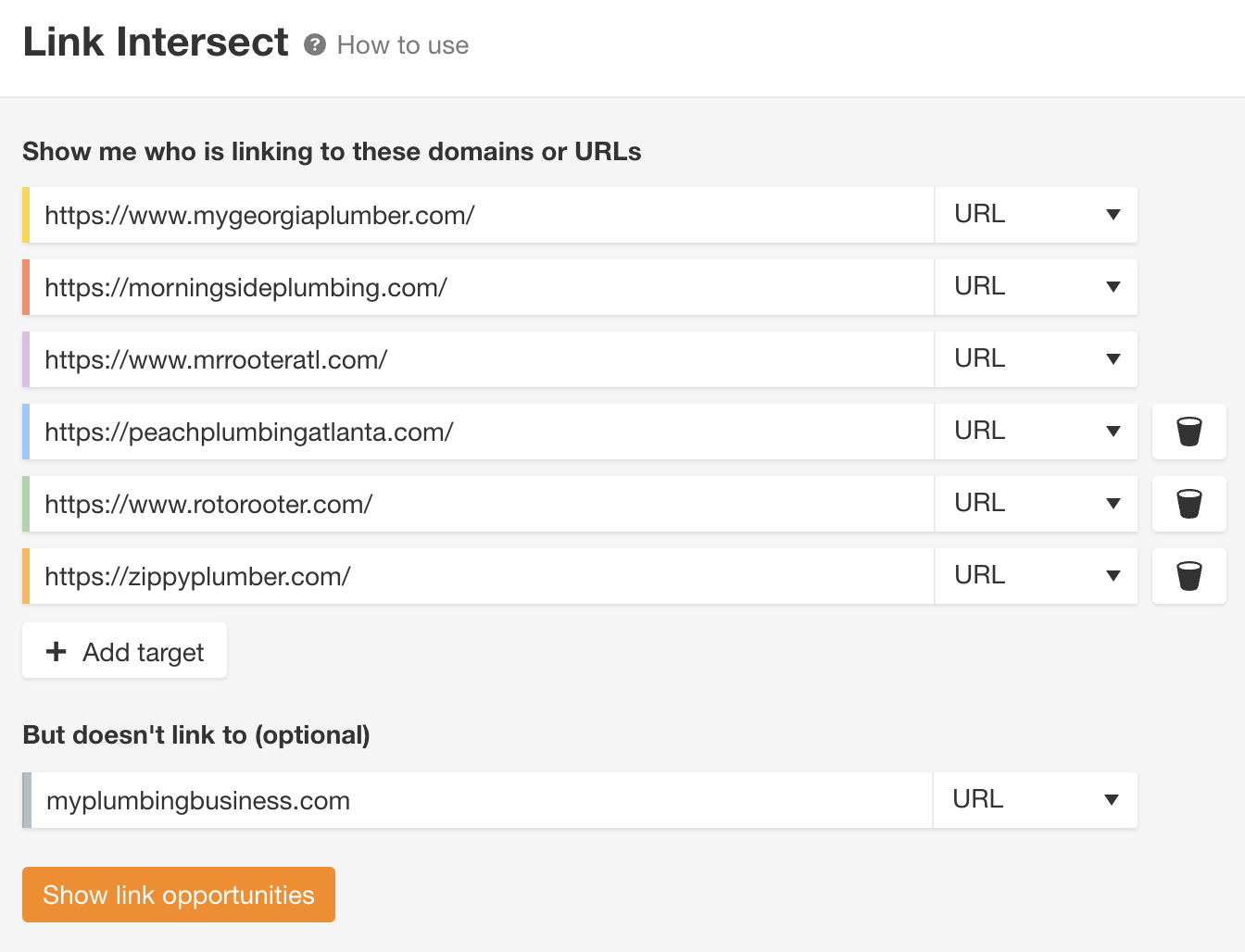
You’ll get a list of websites that link to your competitors but not you. Play around with the number of intersections and filters and try to spot the directories:
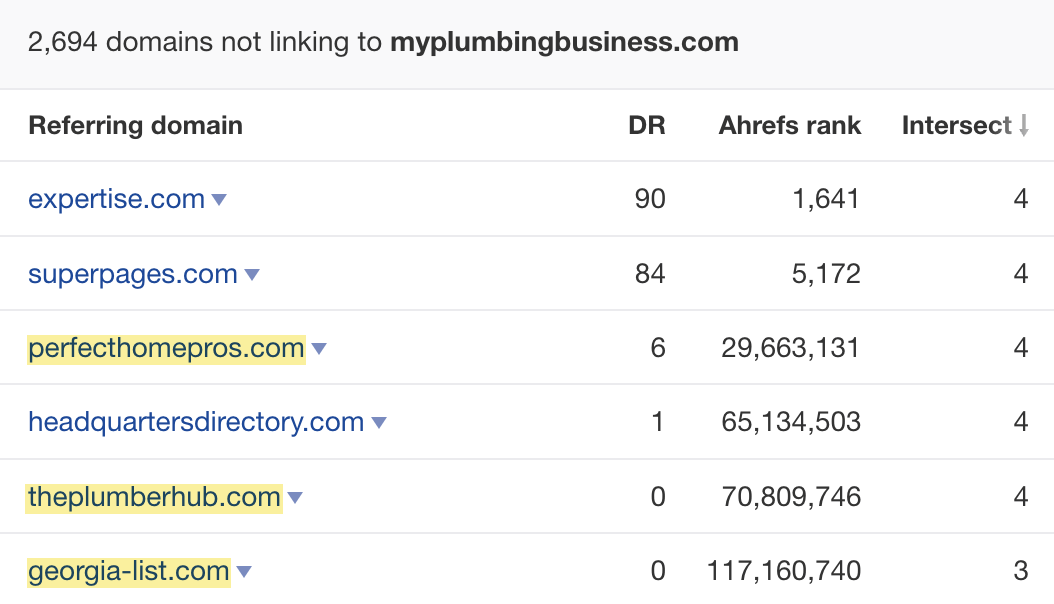
PRO TIP
Once you grasp SEO and online reputation management, you can dive into entity SEO. This is where you optimize how Google perceives your brand and products to (hopefully) become an entity in Google’s Knowledge Graph.
This can significantly impact your branded searches as you get more estate on the SERPs. And similarly to the platforms listed above, you’ll also be present in sections like “related searches”:
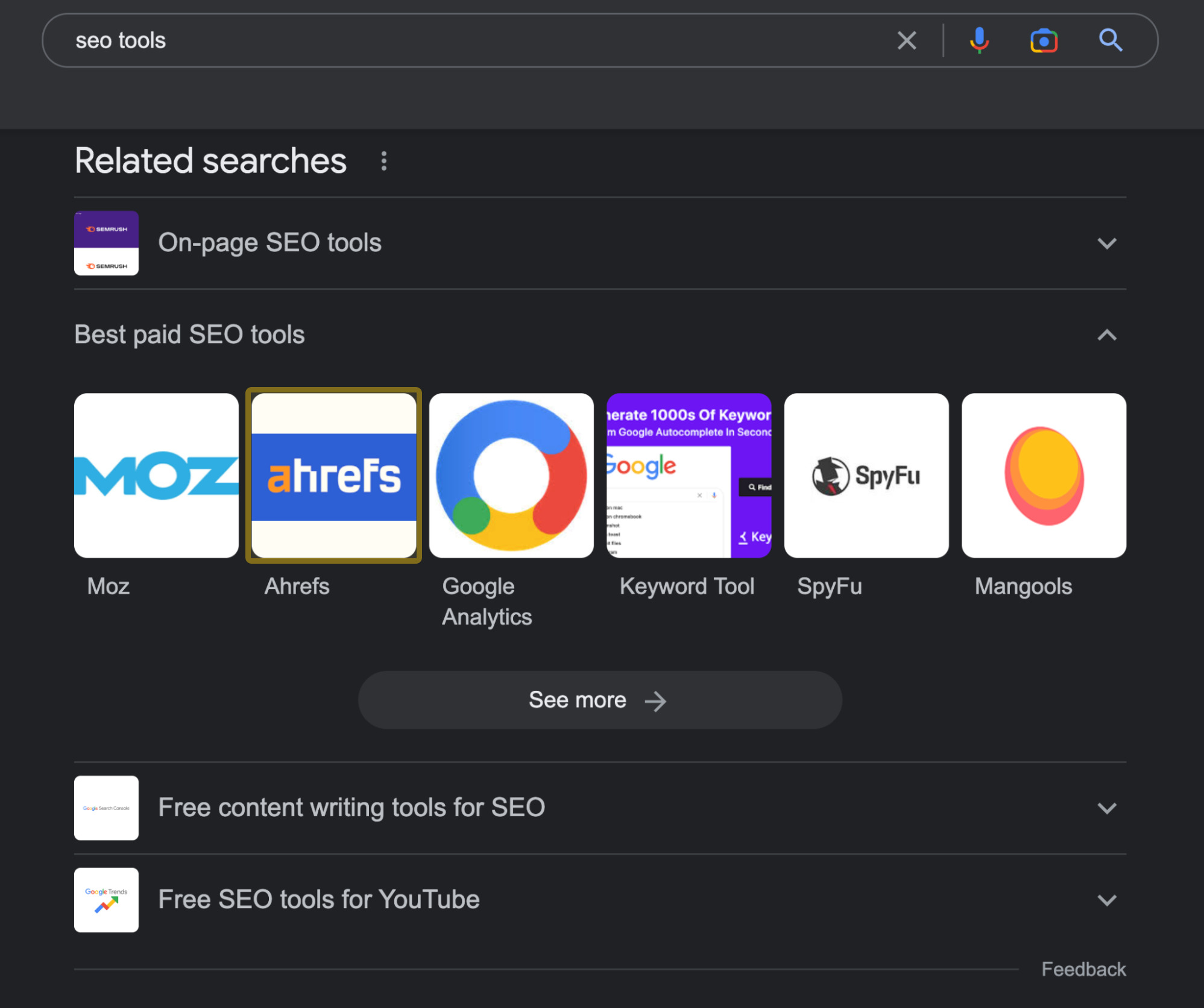
I’ve attended many marketing and SEO events over the years. If there’s a speaker with a talk that excites me, then it’s easy to get into my head. I sometimes even try to learn more about the speaker and their company.
Others may not do the same. But one thing is for sure—people prefer engaging with other people, not brands. Speaking at events and encouraging your colleagues to do the same have many benefits:
- It increases awareness from both marketing and employer branding perspectives.
- It increases employee retention and satisfaction from building their own personal brands.
- It helps you become an authority in your niche.
- It helps you build more personalized relationships with your current and potential customers.
- It can often trigger social media mentions, event reports, mentions in articles, etc.
At Ahrefs, we have many people across different teams and countries speaking and networking at events. We try to reap all the benefits listed above.

If you’re starting from scratch here, it’s better to test the waters at smaller, local events. You’ll need a solid speaking portfolio or something extraordinary to share to land a gig on the biggest stages anyway.
First, discover topics and styles that resonate with your audience. Forget sales pitches and try to provide as much value as possible. Listen to the audience’s feedback.
Second, take your time before hitting bigger stages. Practicing, getting good references, and building confidence are key things to getting there. I still get the jittery feeling even though it’s been a few years since I first spoke in front of 100+ people. A certain level of stress and anxiety apparently never goes away, no matter how experienced you are.
And last but not least, you’ll start getting a lot of speaking invitations once you get on the right path. Be ruthless with choosing the right events. Ask past participants for references. Make sure it has value for you and your company.
A big chunk of our marketing budget goes toward sponsoring podcasts, events, and newsletters.
You may have noticed our huge logo in the last image. We’re trying to squeeze the most out of the biggest SEO conference by being the main sponsor, speaking on the main stage, and having a big booth there:
Events aside, here’s what our sponsorship looks like in newsletters:
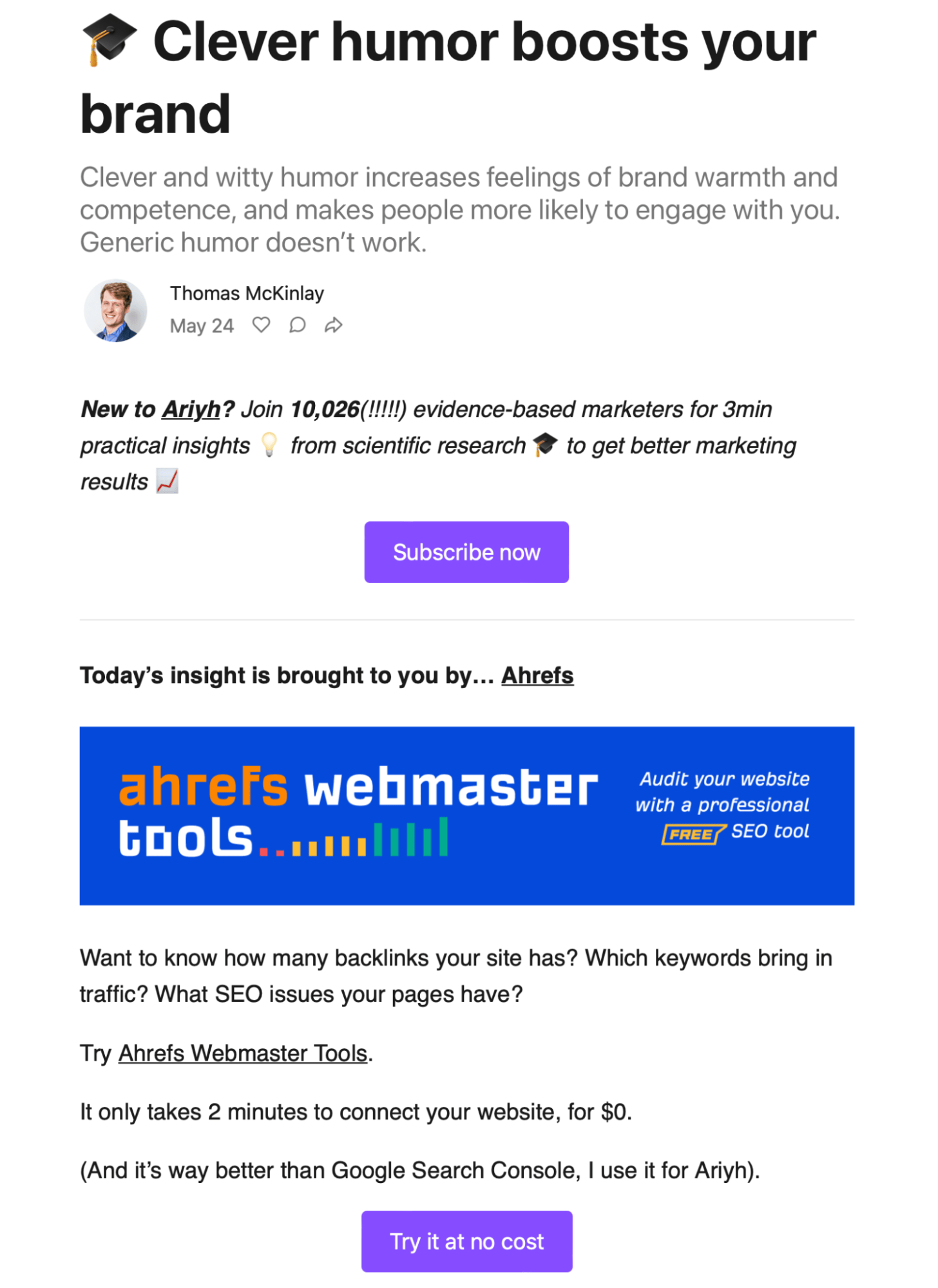
You can even go with the more traditional approach of sponsoring events for the masses. It all depends on your product, positioning, audience, and budget. Anything from local football matches to the Super Bowl can work.
Learn more: Podcast Advertising: $51,975 Spent. Here’s What We Learned
A brand ambassador is anyone who’s regularly in the spotlight representing a company. This is often an employee with the power to influence the community, but you can form these long-term partnerships with anyone. You probably follow influencers who’ve been promoting certain products for years.
For example, at Ahrefs, we have Patrick Stox as our brand ambassador:

And then we have many customers keen to recommend our products to others. Some of them evolve from fans influencing word of mouth to brand ambassadors via sponsorships:

See how this intertwines with some of the tactics we’ve already gone through?
Go through your customer database and try to spot influential people in your niche. Check communication history, whether they already mentioned you somewhere, and then create a shortlist of the best candidates for this.
Of course, the prerequisite is to have a superb product. You can pay some influencers to promote basically anything, but many people can spot dishonest recommendations from miles away. And yes, even ketchup can be apparently a superb product:
To sum it up, influencer marketing should be in your arsenal, and using brand ambassadors is an excellent approach to this.
Some brands share values and common traits among their audiences. Joining forces to appeal to both customer bases can work across niches for win-win campaigns.
The easiest way to get started with this is by co-creating content. Here’s an example of me doing a webinar with Kontent, which is a headless CMS:
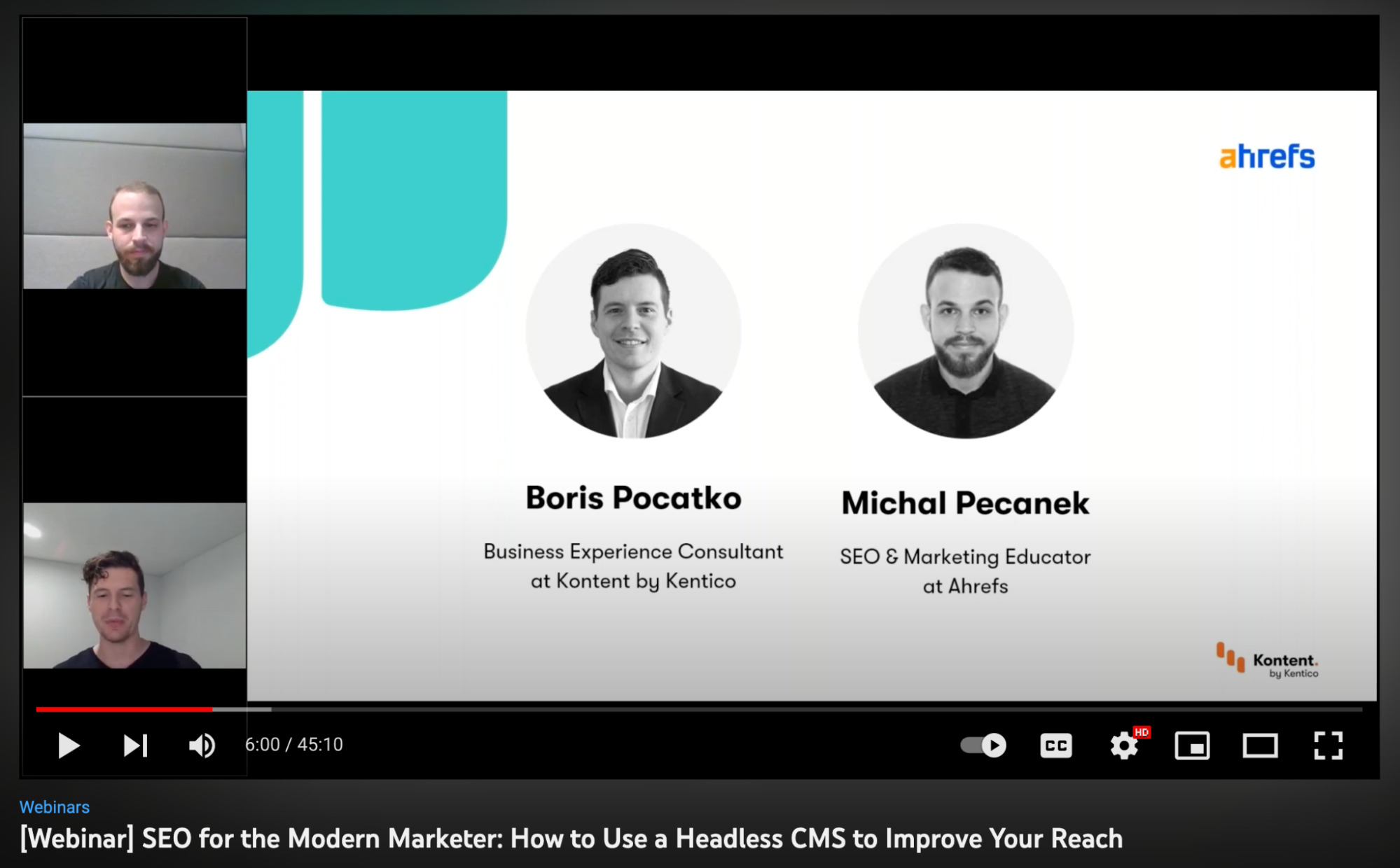
Ahrefs is the authority in SEO the Kontent team needs for this topic. Kontent’s audience consists of potential enterprise-level leads for us where 45 minutes of brand and product exposure has great value. It’s a win-win.
That said, the most impactful co-branding campaigns for brand awareness are co-branded products.
The best example of a successful co-branded product I can recall from the past few years is a MoonSwatch:
At the time of writing, MoonSwatches are still widely unavailable eight months after their release. People who wouldn’t buy an Omega stood in long lines together with wealthy watch fans who’d likely never wear a regular Swatch on their wrists.
In this case, both brands are owned by the same company. But chances are you don’t have a portfolio of complementary brands at your disposal. So here are two main methods of discovering the right brands to partner with.
The first is to enhance your market research data with other products your customers and audience like using.
The second is to use an audience insights tool like SparkToro. It will show you social media accounts and websites that your audience also follows and visits:
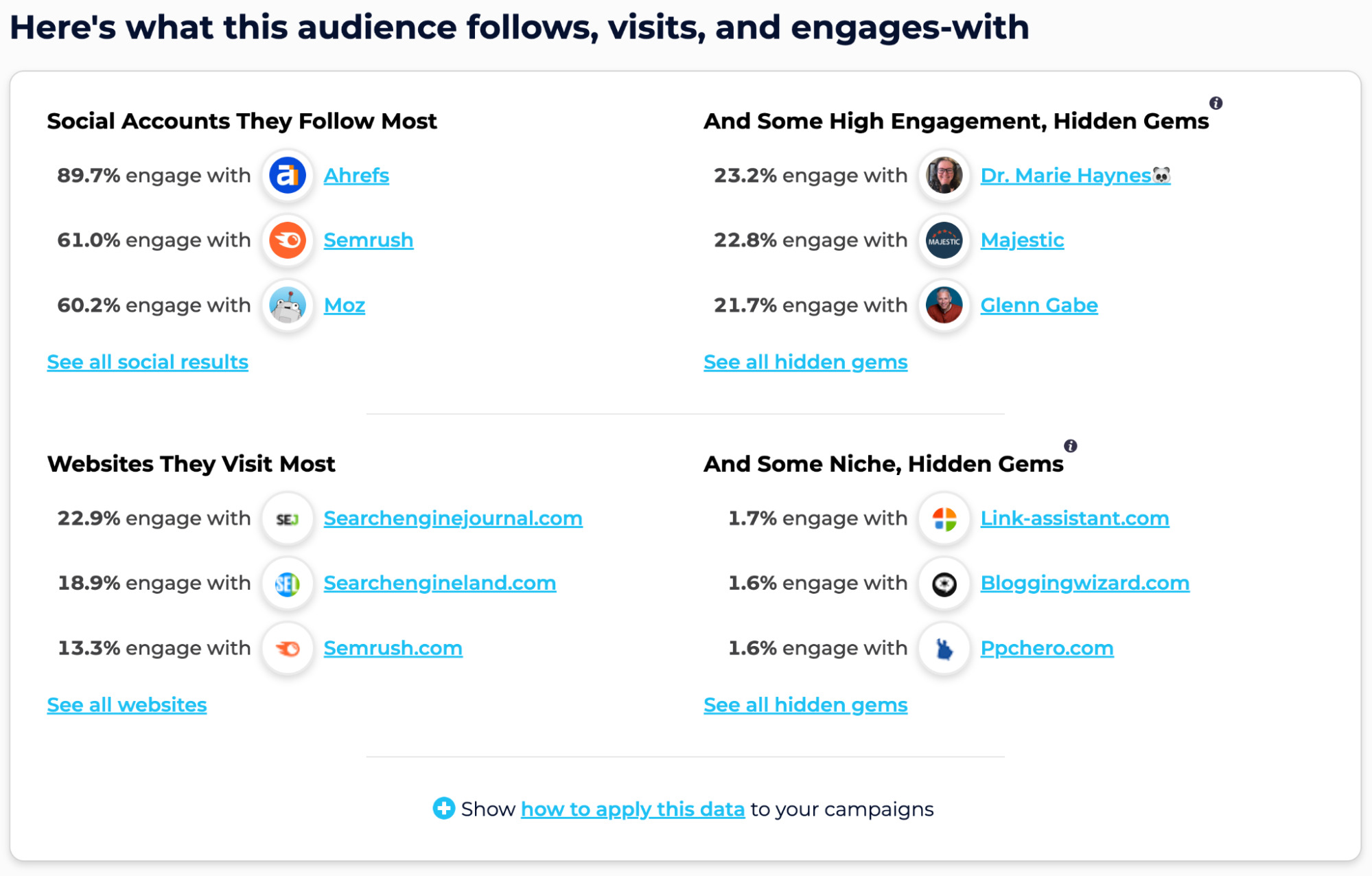
Simply filter out your competitors and see if any remaining companies fit the bill.
Learn more: For Omega and Swatch, the Rewards of Co-branding Could Be Astronomical
I saved the most tried and tested tactic for increasing brand awareness for last.
Ads in mass media have been with us forever. TV ad spending in North America alone was $64.7 billion in 2021. And countless studies and data support that mass media advertising works.
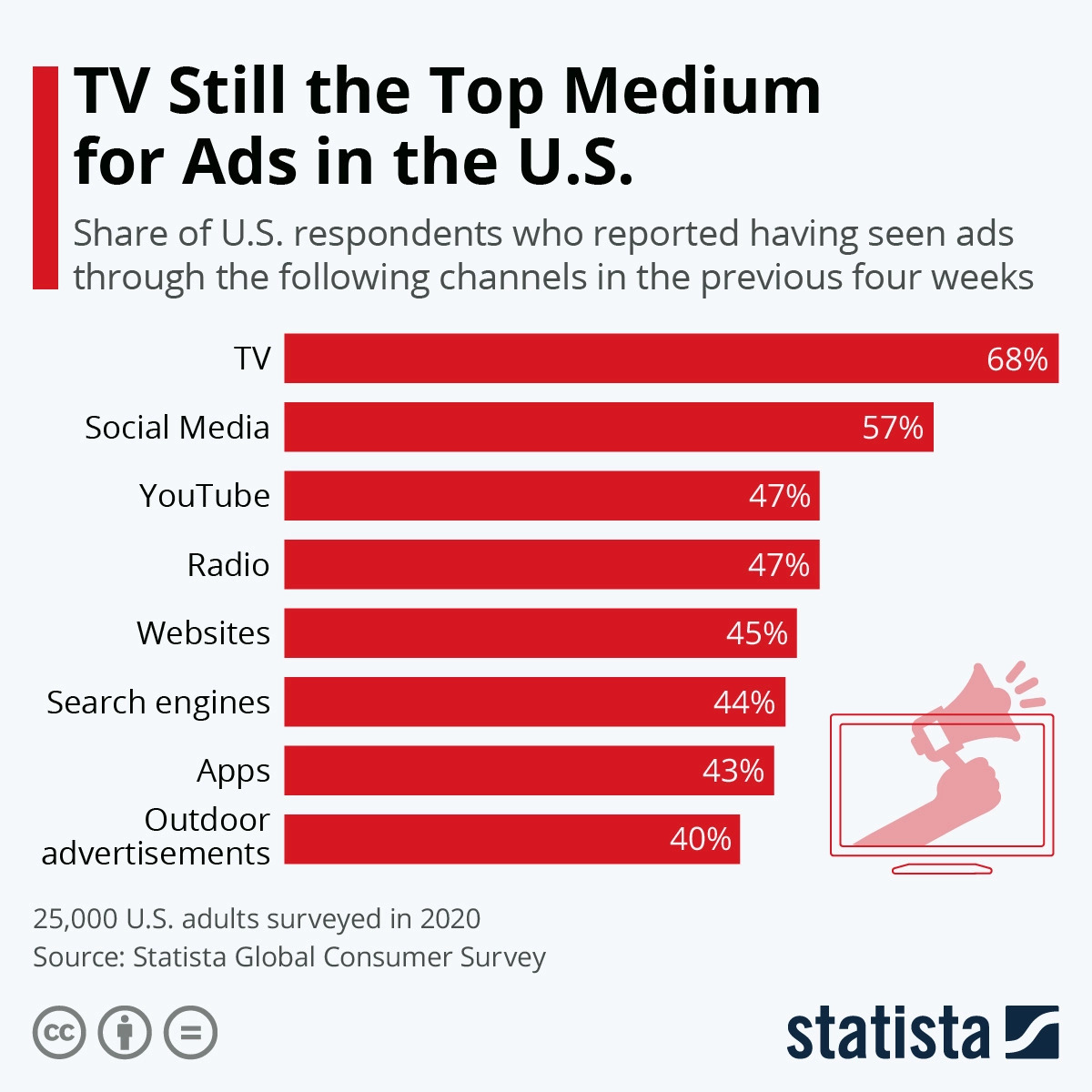
Of course, don’t go and spend 90% of your marketing budget to run national TV ads if you’re a B2B startup. But even smaller companies with very specific target audiences can use mass media properly.
All mass media channels, except TV, can be used to target a specific audience. Most of it comes from location targeting. If your target segment is tech companies, you can, for example, buy a few billboards in technological hubs.
Here are two notable examples from Silicon Valley:
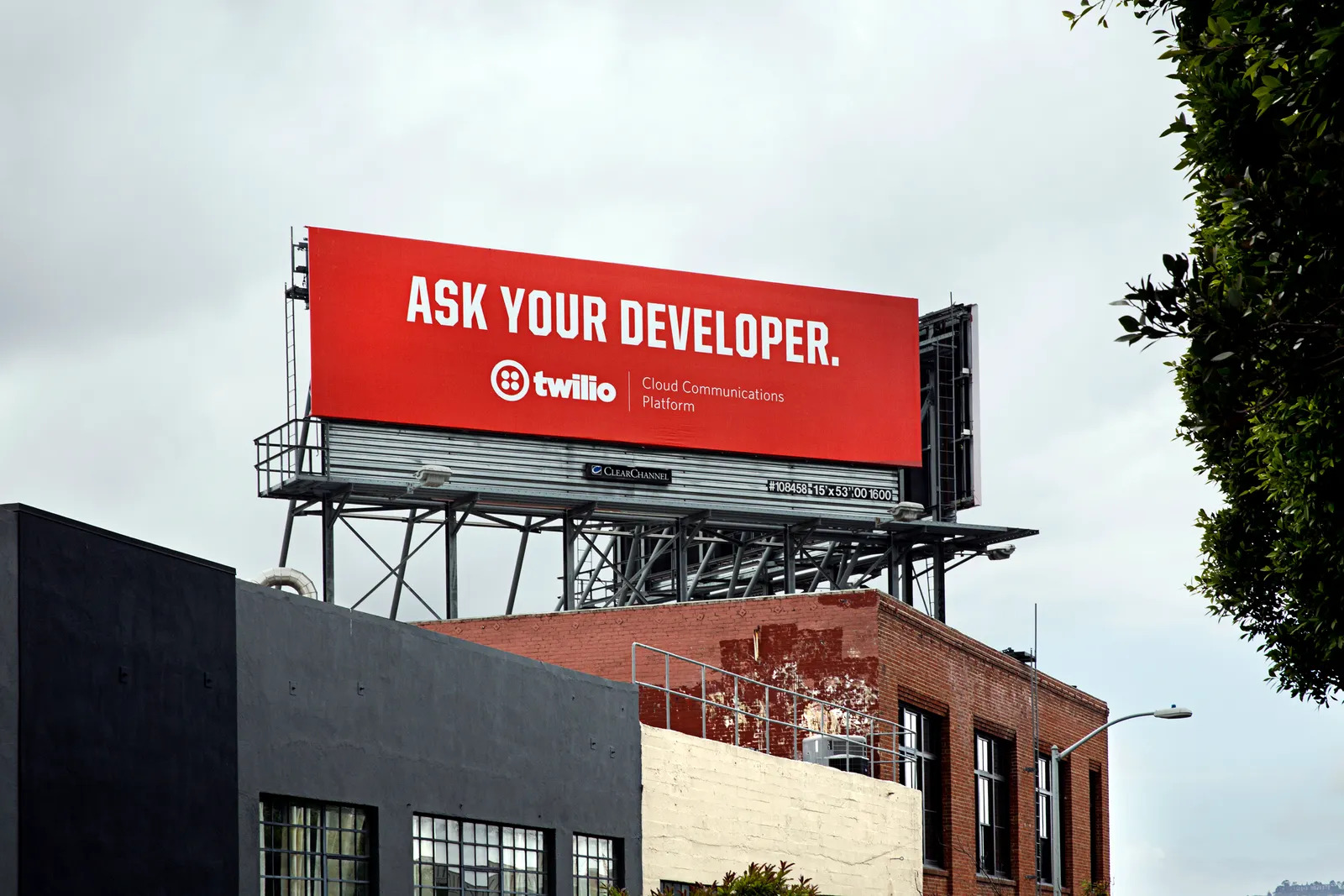
These may be closer to PR stunts, but you get the gist. You can also buy ads on local radios, newspapers, airports frequently visited by your target audience, etc.
Final thoughts
Increasing brand awareness is one of the end goals of brand management. It’s a whole marketing discipline, so we barely touched the surface here and covered just the last mile.
The tactics you choose to increase your brand awareness should always stem from a proper marketing strategy. Its components regarding brand management include:
- Appealing to your target audience with a brand’s positioning (the way they should perceive your brand and products).
- Developing and consistently using multiple brand assets (logos, specific colors, fonts, slogans, mascots, etc.) in your communications to make your brand stand out and easy to recognize.
- Committing a significant portion of your marketing budget and resources to brand-building activities.
- Setting strategic objectives, including a proper way to measure progress.
Take this as a quick introduction to topics related to the effectiveness of brand awareness campaigns. Remember: the sooner you start executing, the better. You can always polish the processes later. I’ll leave you with a few resources that will help you do that:
Got any questions? Ping me on Twitter.
SEO
WordPress Releases A Performance Plugin For “Near-Instant Load Times”

WordPress released an official plugin that adds support for a cutting edge technology called speculative loading that can help boost site performance and improve the user experience for site visitors.
Speculative Loading
Rendering means constructing the entire webpage so that it instantly displays (rendering). When your browser downloads the HTML, images, and other resources and puts it together into a webpage, that’s rendering. Prerendering is putting that webpage together (rendering it) in the background.
What this plugin does is to enable the browser to prerender the entire webpage that a user might navigate to next. The plugin does that by anticipating which webpage the user might navigate to based on where they are hovering.
Chrome lists a preference for only prerendering when there is an at least 80% probability of a user navigating to another webpage. The official Chrome support page for prerendering explains:
“Pages should only be prerendered when there is a high probability the page will be loaded by the user. This is why the Chrome address bar prerendering options only happen when there is such a high probability (greater than 80% of the time).
There is also a caveat in that same developer page that prerendering may not happen based on user settings, memory usage and other scenarios (more details below about how analytics handles prerendering).
The Speculative Loading API solves a problem that previous solutions could not because in the past they were simply prefetching resources like JavaScript and CSS but not actually prerendering the entire webpage.
The official WordPress announcement explains it like this:
Introducing the Speculation Rules API
The Speculation Rules API is a new web API that solves the above problems. It allows defining rules to dynamically prefetch and/or prerender URLs of certain structure based on user interaction, in JSON syntax—or in other words, speculatively preload those URLs before the navigation. This API can be used, for example, to prerender any links on a page whenever the user hovers over them.”
The official WordPress page about this new functionality describes it:
“The Speculation Rules API is a new web API… It allows defining rules to dynamically prefetch and/or prerender URLs of certain structure based on user interaction, in JSON syntax—or in other words, speculatively preload those URLs before the navigation.
This API can be used, for example, to prerender any links on a page whenever the user hovers over them. Also, with the Speculation Rules API, “prerender” actually means to prerender the entire page, including running JavaScript. This can lead to near-instant load times once the user clicks on the link as the page would have most likely already been loaded in its entirety. However that is only one of the possible configurations.”
The new WordPress plugin adds support for the Speculation Rules API. The Mozilla developer pages, a great resource for HTML technical understanding describes it like this:
“The Speculation Rules API is designed to improve performance for future navigations. It targets document URLs rather than specific resource files, and so makes sense for multi-page applications (MPAs) rather than single-page applications (SPAs).
The Speculation Rules API provides an alternative to the widely-available <link rel=”prefetch”> feature and is designed to supersede the Chrome-only deprecated <link rel=”prerender”> feature. It provides many improvements over these technologies, along with a more expressive, configurable syntax for specifying which documents should be prefetched or prerendered.”
See also: Are Websites Getting Faster? New Data Reveals Mixed Results
Performance Lab Plugin
The new plugin was developed by the official WordPress performance team which occasionally rolls out new plugins for users to test ahead of possible inclusion into the actual WordPress core. So it’s a good opportunity to be first to try out new performance technologies.
The new WordPress plugin is by default set to prerender “WordPress frontend URLs” which are pages, posts, and archive pages. How it works can be fine-tuned under the settings:
Settings > Reading > Speculative Loading
Browser Compatibility
The Speculative API is supported by Chrome 108 however the specific rules used by the new plugin require Chrome 121 or higher. Chrome 121 was released in early 2024.
Browsers that do not support will simply ignore the plugin and will have no effect on the user experience.
Check out the new Speculative Loading WordPress plugin developed by the official core WordPress performance team.
How Analytics Handles Prerendering
A WordPress developer commented with a question asking how Analytics would handle prerendering and someone else answered that it’s up to the Analytics provider to detect a prerender and not count it as a page load or site visit.
Fortunately both Google Analytics and Google Publisher Tags (GPT) both are able to handle prerenders. The Chrome developers support page has a note about how analytics handles prerendering:
“Google Analytics handles prerender by delaying until activation by default as of September 2023, and Google Publisher Tag (GPT) made a similar change to delay triggering advertisements until activation as of November 2023.”
Possible Conflict With Ad Blocker Extensions
There are a couple things to be aware of about this plugin, aside from the fact that it’s an experimental feature that requires Chrome 121 or higher.
A comment by a WordPress plugin developer that this feature may not work with browsers that are using the uBlock Origin ad blocking browser extension.
Download the plugin:
Speculative Loading Plugin by the WordPress Performance Team
Read the announcement at WordPress
Speculative Loading in WordPress
See also: WordPress, Wix & Squarespace Show Best CWV Rate Of Improvement
SEO
10 Paid Search & PPC Planning Best Practices
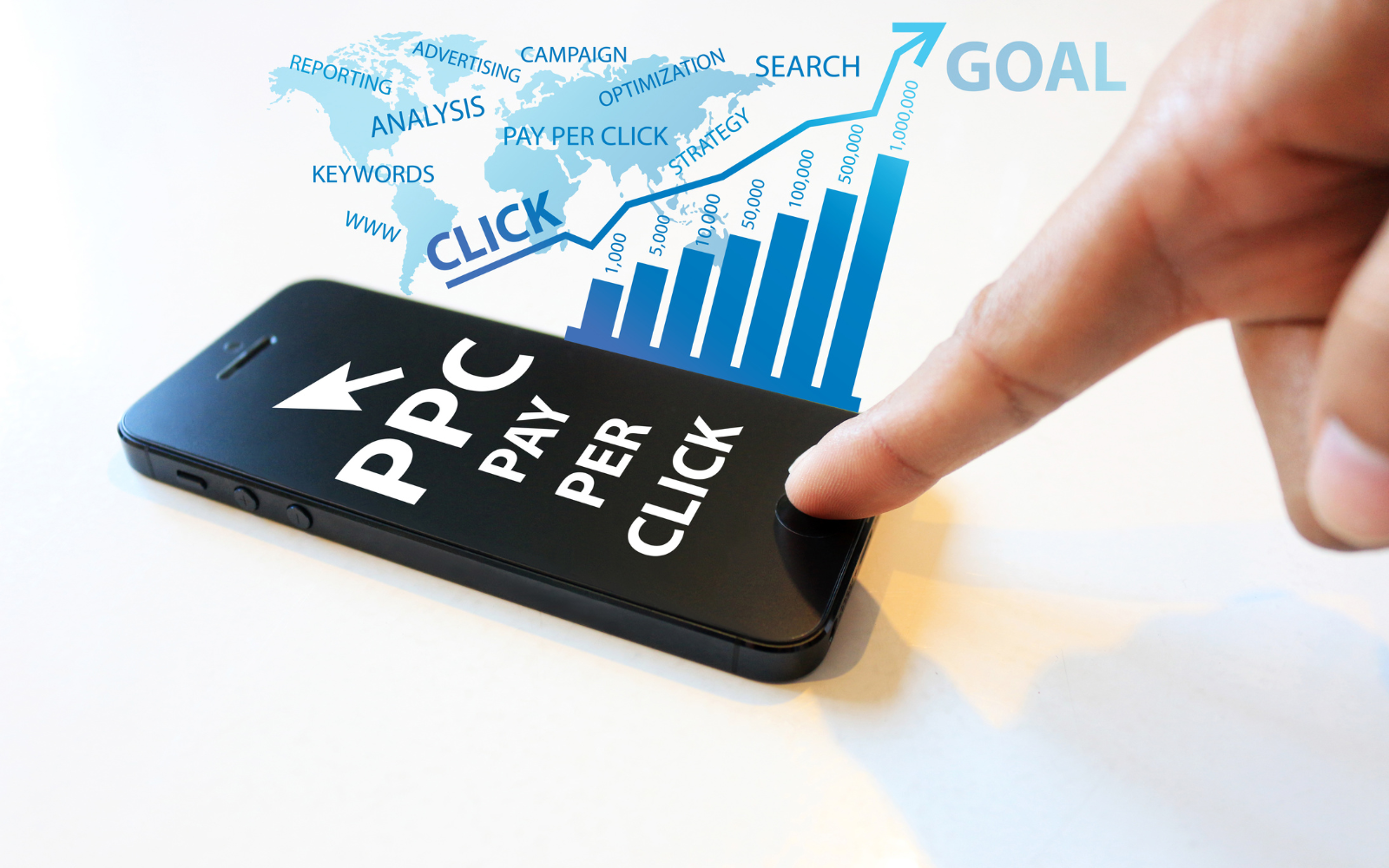
Whether you are new to paid media or reevaluating your efforts, it’s critical to review your performance and best practices for your overall PPC marketing program, accounts, and campaigns.
Revisiting your paid media plan is an opportunity to ensure your strategy aligns with your current goals.
Reviewing best practices for pay-per-click is also a great way to keep up with trends and improve performance with newly released ad technologies.
As you review, you’ll find new strategies and features to incorporate into your paid search program, too.
Here are 10 PPC best practices to help you adjust and plan for the months ahead.
1. Goals
When planning, it is best practice to define goals for the overall marketing program, ad platforms, and at the campaign level.
Defining primary and secondary goals guides the entire PPC program. For example, your primary conversion may be to generate leads from your ads.
You’ll also want to look at secondary goals, such as brand awareness that is higher in the sales funnel and can drive interest to ultimately get the sales lead-in.
2. Budget Review & Optimization
Some advertisers get stuck in a rut and forget to review and reevaluate the distribution of their paid media budgets.
To best utilize budgets, consider the following:
- Reconcile your planned vs. spend for each account or campaign on a regular basis. Depending on the budget size, monthly, quarterly, or semiannually will work as long as you can hit budget numbers.
- Determine if there are any campaigns that should be eliminated at this time to free up the budget for other campaigns.
- Is there additional traffic available to capture and grow results for successful campaigns? The ad platforms often include a tool that will provide an estimated daily budget with clicks and costs. This is just an estimate to show more click potential if you are interested.
- If other paid media channels perform mediocrely, does it make sense to shift those budgets to another?
- For the overall paid search and paid social budget, can your company invest more in the positive campaign results?
3. Consider New Ad Platforms
If you can shift or increase your budgets, why not test out a new ad platform? Knowing your audience and where they spend time online will help inform your decision when choosing ad platforms.
Go beyond your comfort zone in Google, Microsoft, and Meta Ads.
Here are a few other advertising platforms to consider testing:
- LinkedIn: Most appropriate for professional and business targeting. LinkedIn audiences can also be reached through Microsoft Ads.
- TikTok: Younger Gen Z audience (16 to 24), video.
- Pinterest: Products, services, and consumer goods with a female-focused target.
- Snapchat: Younger demographic (13 to 35), video ads, app installs, filters, lenses.
Need more detailed information and even more ideas? Read more about the 5 Best Google Ads Alternatives.
4. Top Topics in Google Ads & Microsoft Ads
Recently, trends in search and social ad platforms have presented opportunities to connect with prospects more precisely, creatively, and effectively.
Don’t overlook newer targeting and campaign types you may not have tried yet.
- Video: Incorporating video into your PPC accounts takes some planning for the goals, ad creative, targeting, and ad types. There is a lot of opportunity here as you can simply include video in responsive display ads or get in-depth in YouTube targeting.
- Performance Max: This automated campaign type serves across all of Google’s ad inventory. Microsoft Ads recently released PMAX so you can plan for consistency in campaign types across platforms. Do you want to allocate budget to PMax campaigns? Learn more about how PMax compares to search.
- Automation: While AI can’t replace human strategy and creativity, it can help manage your campaigns more easily. During planning, identify which elements you want to automate, such as automatically created assets and/or how to successfully guide the AI in the Performance Max campaigns.
While exploring new features, check out some hidden PPC features you probably don’t know about.
5. Revisit Keywords
The role of keywords has evolved over the past several years with match types being less precise and loosening up to consider searcher intent.
For example, [exact match] keywords previously would literally match with the exact keyword search query. Now, ads can be triggered by search queries with the same meaning or intent.
A great planning exercise is to lay out keyword groups and evaluate if they are still accurately representing your brand and product/service.
Review search term queries triggering ads to discover trends and behavior you may not have considered. It’s possible this has impacted performance and conversions over time.
Critical to your strategy:
- Review the current keyword rules and determine if this may impact your account in terms of close variants or shifts in traffic volume.
- Brush up on how keywords work in each platform because the differences really matter!
- Review search term reports more frequently for irrelevant keywords that may pop up from match type changes. Incorporate these into match type changes or negative keywords lists as appropriate.
6. Revisit Your Audiences
Review the audiences you selected in the past, especially given so many campaign types that are intent-driven.
Automated features that expand your audience could be helpful, but keep an eye out for performance metrics and behavior on-site post-click.
Remember, an audience is simply a list of users who are grouped together by interests or behavior online.
Therefore, there are unlimited ways to mix and match those audiences and target per the sales funnel.
Here are a few opportunities to explore and test:
- LinkedIn user targeting: Besides LinkedIn, this can be found exclusively in Microsoft Ads.
- Detailed Demographics: Marital status, parental status, home ownership, education, household income.
- In-market and custom intent: Searches and online behavior signaling buying cues.
- Remarketing: Advertisers website visitors, interactions with ads, and video/ YouTube.
Note: This varies per the campaign type and seems to be updated frequently, so make this a regular check-point in your campaign management for all platforms.
7. Organize Data Sources
You will likely be running campaigns on different platforms with combinations of search, display, video, etc.
Looking back at your goals, what is the important data, and which platforms will you use to review and report? Can you get the majority of data in one analytics platform to compare and share?
Millions of companies use Google Analytics, which is a good option for centralized viewing of advertising performance, website behavior, and conversions.
8. Reevaluate How You Report
Have you been using the same performance report for years?
It’s time to reevaluate your essential PPC key metrics and replace or add that data to your reports.
There are two great resources to kick off this exercise:
Your objectives in reevaluating the reporting are:
- Are we still using this data? Is it still relevant?
- Is the data we are viewing actionable?
- What new metrics should we consider adding we haven’t thought about?
- How often do we need to see this data?
- Do the stakeholders receiving the report understand what they are looking at (aka data visualization)?
Adding new data should be purposeful, actionable, and helpful in making decisions for the marketing plan. It’s also helpful to decide what type of data is good to see as “deep dives” as needed.
9. Consider Using Scripts
The current ad platforms have plenty of AI recommendations and automated rules, and there is no shortage of third-party tools that can help with optimizations.
Scripts is another method for advertisers with large accounts or some scripting skills to automate report generation and repetitive tasks in their Google Ads accounts.
Navigating the world of scripts can seem overwhelming, but a good place to start is a post here on Search Engine Journal that provides use cases and resources to get started with scripts.
Luckily, you don’t need a Ph.D. in computer science — there are plenty of resources online with free or templated scripts.
10. Seek Collaboration
Another effective planning tactic is to seek out friendly resources and second opinions.
Much of the skill and science of PPC management is unique to the individual or agency, so there is no shortage of ideas to share between you.
You can visit the Paid Search Association, a resource for paid ad managers worldwide, to make new connections and find industry events.
Preparing For Paid Media Success
Strategies should be based on clear and measurable business goals. Then, you can evaluate the current status of your campaigns based on those new targets.
Your paid media strategy should also be built with an eye for both past performance and future opportunities. Look backward and reevaluate your existing assumptions and systems while investigating new platforms, topics, audiences, and technologies.
Also, stay current with trends and keep learning. Check out ebooks, social media experts, and industry publications for resources and motivational tips.
More resources:
Featured Image: Vanatchanan/Shutterstock
SEO
Google Limits News Links In California Over Proposed ‘Link Tax’ Law

Google announced that it plans to reduce access to California news websites for a portion of users in the state.
The decision comes as Google prepares for the potential passage of the California Journalism Preservation Act (CJPA), a bill requiring online platforms like Google to pay news publishers for linking to their content.
What Is The California Journalism Preservation Act?
The CJPA, introduced in the California State Legislature, aims to support local journalism by creating what Google refers to as a “link tax.”
If passed, the Act would force companies like Google to pay media outlets when sending readers to news articles.
However, Google believes this approach needs to be revised and could harm rather than help the news industry.
Jaffer Zaidi, Google’s VP of Global News Partnerships, stated in a blog post:
“It would favor media conglomerates and hedge funds—who’ve been lobbying for this bill—and could use funds from CJPA to continue to buy up local California newspapers, strip them of journalists, and create more ghost papers that operate with a skeleton crew to produce only low-cost, and often low-quality, content.”
Google’s Response
To assess the potential impact of the CJPA on its services, Google is running a test with a percentage of California users.
During this test, Google will remove links to California news websites that the proposed legislation could cover.
Zaidi states:
“To prepare for possible CJPA implications, we are beginning a short-term test for a small percentage of California users. The testing process involves removing links to California news websites, potentially covered by CJPA, to measure the impact of the legislation on our product experience.”
Google Claims Only 2% of Search Queries Are News-Related
Zaidi highlighted peoples’ changing news consumption habits and its effect on Google search queries (emphasis mine):
“It’s well known that people are getting news from sources like short-form videos, topical newsletters, social media, and curated podcasts, and many are avoiding the news entirely. In line with those trends, just 2% of queries on Google Search are news-related.”
Despite the low percentage of news queries, Google wants to continue helping news publishers gain visibility on its platforms.
However, the “CJPA as currently constructed would end these investments,” Zaidi says.
A Call For A Different Approach
In its current form, Google maintains that the CJPA undermines news in California and could leave all parties worse off.
The company urges lawmakers to consider alternative approaches supporting the news industry without harming smaller local outlets.
Google argues that, over the past two decades, it’s done plenty to help news publishers innovate:
“We’ve rolled out Google News Showcase, which operates in 26 countries, including the U.S., and has more than 2,500 participating publications. Through the Google News Initiative we’ve partnered with more than 7,000 news publishers around the world, including 200 news organizations and 6,000 journalists in California alone.”
Zaidi suggested that a healthy news industry in California requires support from the state government and a broad base of private companies.
As the legislative process continues, Google is willing to cooperate with California publishers and lawmakers to explore alternative paths that would allow it to continue linking to news.
Featured Image:Ismael Juan/Shutterstock
-

 PPC6 days ago
PPC6 days agoHow 6 SEO Experts Are Navigating Google Update Chaos
-

 SEARCHENGINES6 days ago
SEARCHENGINES6 days agoBing Search Testing Removing Cache Link From Search Results
-

 MARKETING6 days ago
MARKETING6 days ago60 Remote Work Stats to Know in 2024
-

 WORDPRESS5 days ago
WORDPRESS5 days ago10 WordPress Influencers to Follow in 2024 – WordPress.com News
-

 WORDPRESS6 days ago
WORDPRESS6 days ago8 Best WordPress Migration Services (Compared)
-

 MARKETING5 days ago
MARKETING5 days agoFeeling Stuck: What to Do When You Don’t Know What to Do
-

 SEO7 days ago
SEO7 days agoGoogle Explains How It Chooses Canonical Webpages
-

 SEARCHENGINES4 days ago
SEARCHENGINES4 days agoMore Google March 2024 Core Update Ranking Volatility














You must be logged in to post a comment Login